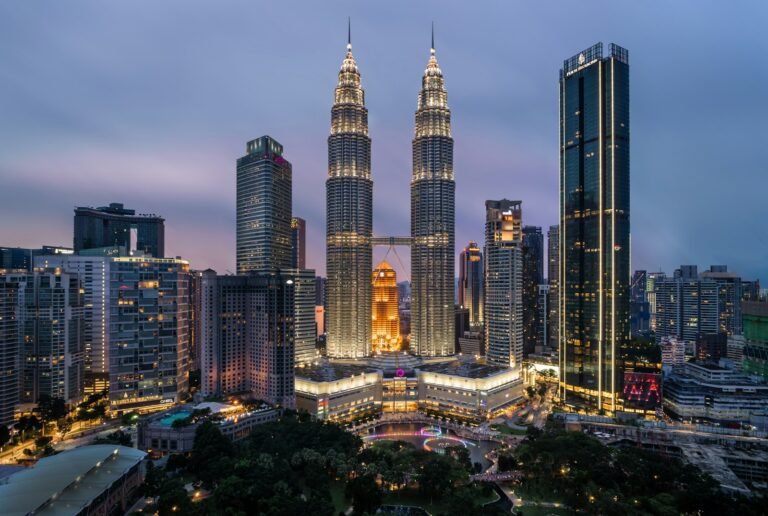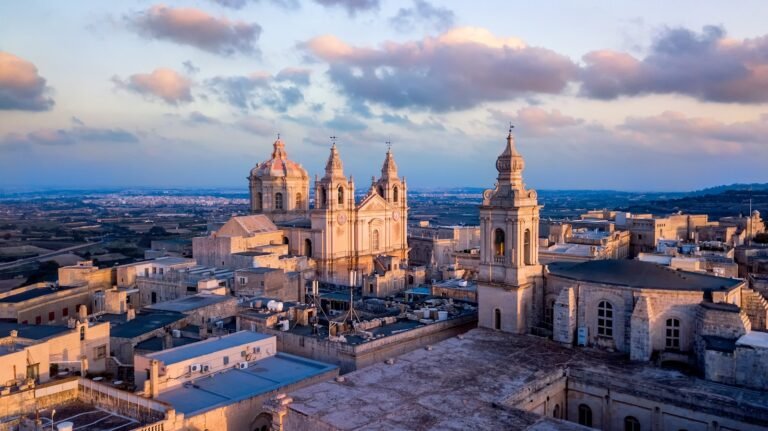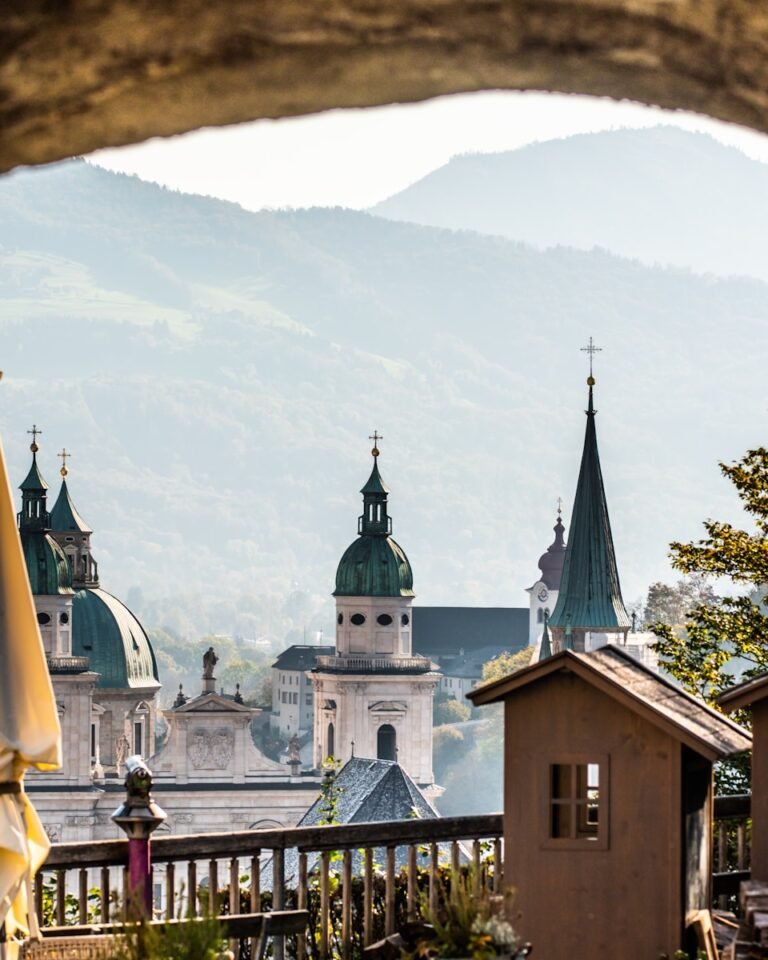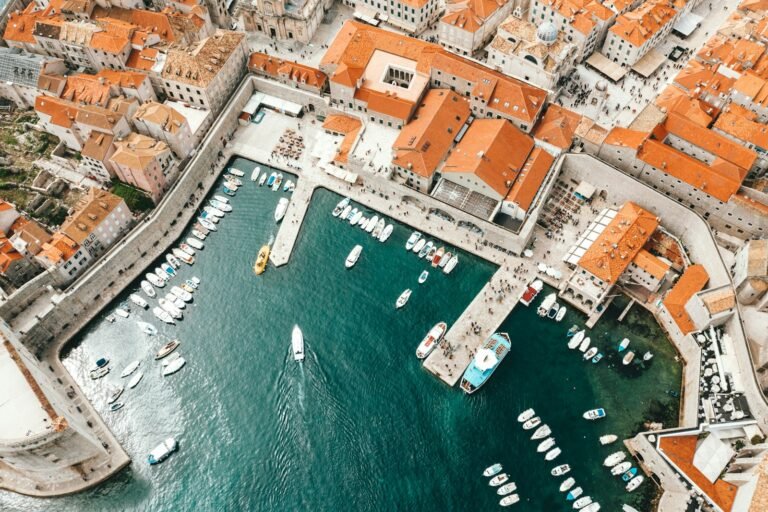Everything You Need to Know About the Peru Digital Nomad Visa in 2025
So, you’ve been dreaming of working from a cozy cafe in Cusco or enjoying the stunning views of the Andes while getting your work done? Peru is becoming a popular destination for digital nomads, and the country has launched a new visa to make it even easier for remote workers to call it home! In this post, I’ll dive into everything you need to know about the Peru digital nomad visa – from how to apply to what life is like for remote workers in this vibrant country. Let’s make your dream remote life a reality
What is the Peru Digital Nomad Visa?
The Peru Digital Nomad Visa is a special visa designed for remote workers who want to live and work from Peru. This visa allows individuals employed by a foreign company, freelancers, or business owners to legally reside and work in the country while continuing their professional work remotely.
Peru’s Digital Nomad Visa aims to attract talented international workers, digital entrepreneurs, and remote employees by offering them the opportunity to enjoy the country’s vibrant culture, landscapes, and lifestyle, all while being able to carry on their professional activities.
The visa was introduced as part of Peru’s strategy to tap into the growing global trend of remote work, particularly in response to the post-pandemic shift where many workers no longer need to be physically present at a traditional office.
By offering a legal framework for remote workers, Peru hopes to boost its economy through foreign income and attract professionals from around the world who are looking for new experiences and work environments. This visa is also seen as a tool for the country to enhance its international reputation as a digital hub.
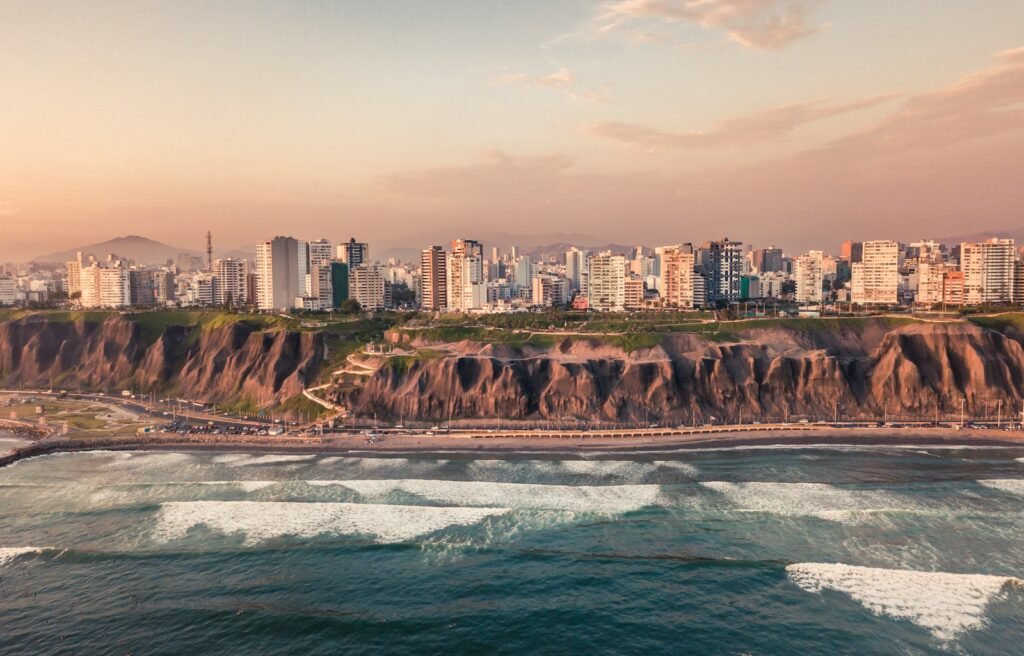
Duration and Renewal Process of the Visa
The Peru Digital Nomad Visa typically offers a 12-month stay, which is the initial duration granted upon approval. The good news is that this visa is renewable, allowing remote workers to stay for additional periods as long as they continue to meet the eligibility requirements. The visa’s renewal process involves demonstrating that the applicant has maintained a remote income and adhered to the terms of the visa during their initial stay.
For renewal, remote workers will need to provide updated documentation, including proof of ongoing employment, contracts, or business activities, to show that they still meet the qualifications for the visa.
Depending on the specific rules set by the Peruvian immigration authorities, remote workers may be required to renew the visa in person or submit their application online. It’s important to note that the renewal process can sometimes involve a review of the applicant’s financial situation and their continued ties to a foreign employer or business.
Comparison with Other Digital Nomad Visas Worldwide
The Peru Digital Nomad Visa is one of many digital nomad visa options around the globe, each offering different benefits and requirements. Below is a comparison between Peru’s Digital Nomad Visa and some of the most popular digital nomad visas worldwide:
- Estonia Digital Nomad Visa
- Duration: Up to 1 year (with the possibility of extension).
- Requirements: Proof of income, health insurance, and a remote job or business.
- Comparison: Like Peru, Estonia offers a 1-year visa for remote workers, but Estonia’s process is more digital-first, with many of the visa procedures handled online. Estonia is known for its advanced e-residency program, which appeals to digital entrepreneurs.
- Portugal Digital Nomad Visa
- Duration: 1 year, with the possibility of renewal for 2 years.
- Requirements: Proof of remote employment, minimum monthly income, and health insurance.
- Comparison: Portugal’s visa is also aimed at attracting remote workers, but it requires a higher minimum income compared to Peru’s Digital Nomad Visa. However, Portugal is known for its expat-friendly culture and warm climate, making it a strong competitor. Portugal Digital Nomad Visa: Everything You Need to Know in 2025
- Dubai Digital Nomad Visa
- Duration: 1 year.
- Requirements: Proof of remote income, valid passport, health insurance, and minimum monthly income.
- Comparison: Dubai’s visa also lasts for 1 year but offers a luxurious lifestyle in one of the world’s most iconic cities. It targets high-earning remote workers with a significant minimum income requirement, while Peru is typically more accessible to workers across a variety of income brackets. Dubai Digital Nomad Visa 2025: How to Apply and Live in the UAE as a Remote Worker
- Costa Rica Digital Nomad Visa
- Duration: 1 year, renewable for an additional year.
- Requirements: Proof of remote work and income, with a lower threshold than some other countries.
- Comparison: Costa Rica’s visa is very similar to Peru’s in terms of requirements and length of stay. However, Costa Rica’s location and appeal lie in its rich biodiversity and eco-tourism opportunities, attracting remote workers interested in nature and outdoor living. The Ultimate Guide to Costa Rica’s Digital Nomad Visa (2025)
- Barbados Welcome Stamp
- Duration: 12 months, renewable.
- Requirements: Proof of employment, income, or business activities that are remote.
- Comparison: Barbados’ visa also offers a 12-month stay and is geared toward attracting remote workers. The key difference is Barbados’ focus on attracting workers seeking a tropical lifestyle with a focus on the Caribbean environment. It may appeal to those looking for a laid-back island lifestyle.
Eligibility Requirements for the Peru Digital Nomad Visa
The Peru Digital Nomad Visa is designed to be accessible to a wide range of remote workers, freelancers, and business owners looking to live and work in Peru while continuing their professional activities. However, to ensure that applicants meet the necessary criteria and can support themselves during their stay, the visa has several key eligibility requirements. These include proof of income, proof of remote work or business ownership, and the submission of specific documents.
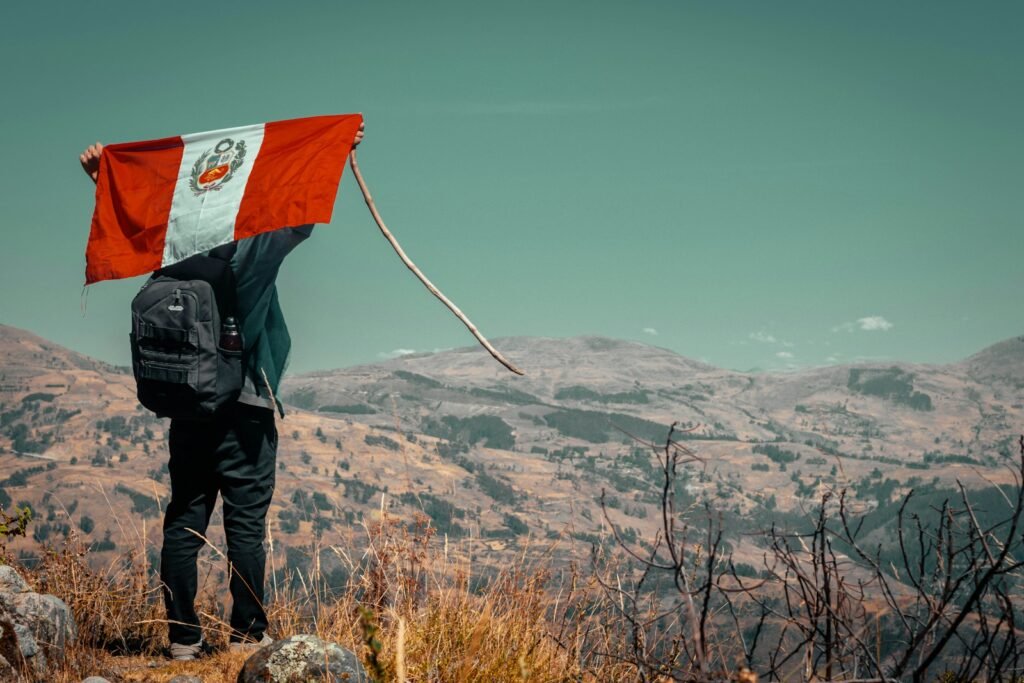
Minimum Income Requirements (Approx. $1,000-1,500/month)
One of the key requirements for the Peru Digital Nomad Visa is demonstrating that you can financially support yourself while living in the country. The government of Peru has established a minimum monthly income threshold for visa applicants, which is typically in the range of $1,000 to $1,500 USD per month. This amount is considered sufficient for an individual to live comfortably in Peru, although the actual amount may vary depending on the specific costs of living in different cities or regions within the country.
For context, $1,000 to $1,500 per month is generally adequate for living in Peru’s cities such as Lima, Arequipa, or Cusco. The cost of living is significantly lower than in many Western countries, which makes Peru an appealing destination for digital nomads seeking a more affordable lifestyle while continuing to earn remotely. However, it’s important to note that this threshold is generally intended for individuals who are not dependent on local jobs but are earning income from abroad.
The minimum income requirement is designed to ensure that digital nomads will not become a financial burden on the country’s social services or economy. It also helps ensure that applicants can cover basic living expenses, such as rent, food, healthcare, and other daily costs. In some cases, applicants may be asked to demonstrate that their income is stable and sustainable for the duration of their stay in Peru.
Proof of Employment or Business Ownership
In addition to the income requirement, applicants must also prove that they are employed in a remote capacity or have ownership of a business that allows them to work remotely from anywhere in the world. Peru’s Digital Nomad Visa is intended specifically for remote workers, so the country does not allow individuals who are planning to seek local employment in Peru to apply for this visa.
There are two primary ways to demonstrate eligibility for this aspect of the visa:
- Proof of Employment:
- Remote workers must provide proof of employment with a foreign company that allows them to work from anywhere. This can include a job contract or a letter from the employer stating that the applicant is employed on a remote basis.
- The letter or contract should clearly specify that the applicant works remotely and that their income is derived from outside Peru. This proof is critical to ensure that the applicant does not intend to take up local employment, which would require a different type of visa.
- Proof of Business Ownership:
- Alternatively, applicants who are self-employed or own a remote business can provide evidence of their business ownership. This can include business registration documents, contracts, or invoices showing that the applicant’s income is derived from a foreign business, freelance work, or online services.
- Self-employed digital nomads should also submit proof of any business activities that are related to their remote work, such as contracts with clients or evidence of ongoing income from international sources.
Necessary Documents to Apply
To apply for the Peru Digital Nomad Visa, applicants must submit a range of documents that demonstrate their eligibility and readiness to live and work in Peru. These documents include personal identification, proof of employment or business ownership, and financial documents to verify the minimum income requirement. Below are the key documents typically required:
- Valid Passport:
- The first document you will need to apply is a valid passport. Your passport should have at least six months of validity remaining from the time of your application submission.
- The passport will be used to verify your identity and nationality.
- Proof of Income:
- You will need to provide proof that you meet the minimum income requirement, typically in the range of $1,000 to $1,500 per month. This can be done through bank statements, pay slips, or a letter from your employer outlining your salary or income.
- Freelancers or business owners will need to show proof of income generated from foreign sources, such as invoices, contracts, or bank statements reflecting payments from international clients.
- Proof of Employment or Business Ownership:
- If you are employed, you will need to provide an employment contract or a letter from your employer that specifies you are working remotely and earning income from outside of Peru.
- For self-employed individuals or business owners, documents showing proof of business ownership, such as business registration, invoices, or contracts, are necessary.
- Health Insurance:
- Many countries require remote workers to have health insurance while living and working abroad. Peru is no different. You will need to show proof of health insurance that covers you while you are living in Peru.
- This can be private international health insurance or a travel insurance policy that meets the minimum requirements set by Peruvian authorities.
- Proof of Residence or Accommodation:
- Depending on the specific guidelines at the time of your application, you may also need to submit proof of accommodation in Peru, such as a lease agreement, hotel reservation, or invitation letter from a host in the country.
- Criminal Background Check:
- Some applicants may be required to provide a criminal background check from their country of origin or residence. This helps ensure that applicants do not have a criminal record that would disqualify them from entering Peru.
- Visa Application Form:
- The visa application form can typically be filled out online or in person, depending on the application process. This form asks for personal information, including your job details, contact information, and purpose of the visit.
- Visa Fee Payment:
- There may be a visa processing fee that applicants need to pay when submitting their application. This fee can vary, so it’s important to check with the relevant Peruvian authorities or embassy for the most up-to-date information.
Application Process
Once you have gathered all necessary documents, the application process can begin. The process usually involves submitting your documents to the Peruvian consulate or embassy in your home country or through the online application portal (if available). After submission, your application will be reviewed by the Peruvian immigration authorities. Processing times may vary, but typically, it takes several weeks to receive a decision on your visa application.
In some cases, applicants may be required to attend an interview or provide additional documentation if there are any questions or discrepancies in the initial application.
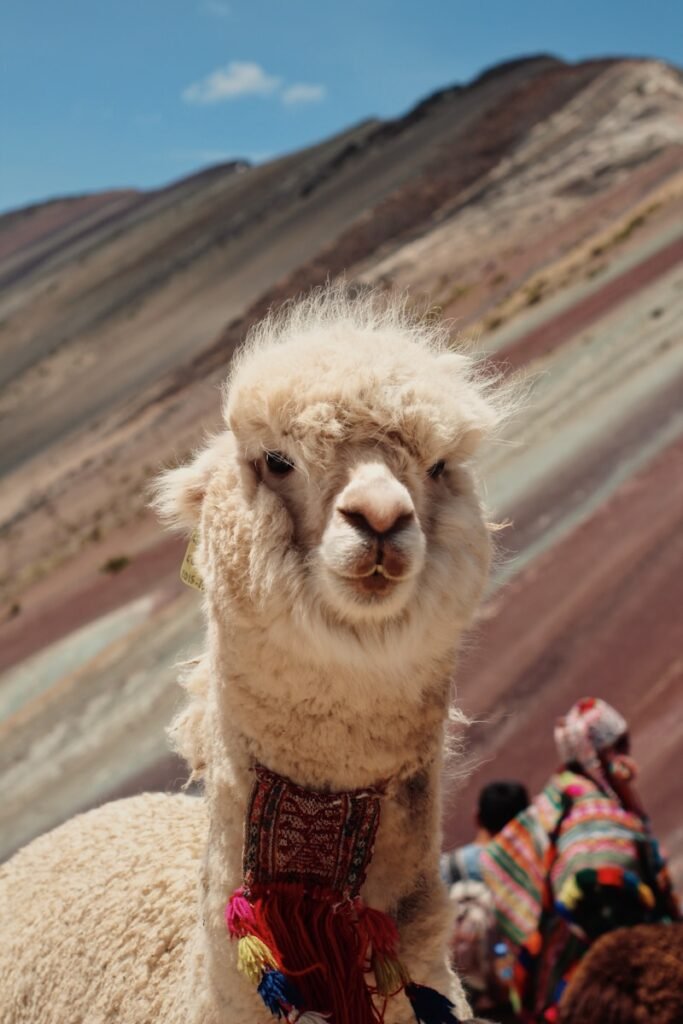
How to Apply for the Peru Digital Nomad Visa
The Peru Digital Nomad Visa provides a fantastic opportunity for remote workers and digital entrepreneurs to live and work in Peru. However, applying for this visa involves several steps and requires careful preparation. Below is a detailed, step-by-step guide to help you navigate the process, from gathering necessary documents to submitting your application. Additionally, we’ll look at the approval timeline, where to submit your application, and what happens if your application is rejected.
Step-by-Step Application Process
- Determine Eligibility
- Before starting your application, ensure that you meet all the eligibility requirements for the Peru Digital Nomad Visa. This includes demonstrating that you can financially support yourself (with a minimum monthly income of $1,000 to $1,500 USD), proving your remote work status (via employment or business ownership), and ensuring you have a valid passport.
- Gather the Required Documents
- Valid Passport: Ensure your passport is valid for at least six months from the date of your application. If you do not have a passport, apply for one well in advance.
- Proof of Income: Collect documents that prove you meet the minimum monthly income requirement. This could include bank statements, pay slips, or a letter from your employer verifying remote work and income.
- Proof of Employment or Business Ownership: Depending on whether you are employed or self-employed, gather the necessary documents. If you are employed, provide an employment contract or a remote work verification letter from your employer. If you own a business, submit business registration documents, invoices, or contracts that demonstrate your remote income.
- Health Insurance: You will need to show proof of valid health insurance that covers you during your stay in Peru.
- Proof of Accommodation: Gather documents that demonstrate your accommodation plans in Peru, such as a lease agreement, hotel booking, or an invitation letter from a host in the country.
- Criminal Background Check: Some applicants may need to provide a criminal background check from their home country or place of residence to demonstrate that they do not have any serious criminal history.
- Visa Application Form: Complete the online or paper visa application form. This form will ask for personal details, including your employment or business information, the purpose of your stay, and other relevant data.
- Complete the Visa Application Form
- The application form is a required document that provides key details to Peruvian immigration authorities about your personal background and your intentions for staying in the country. This form may be available online or may need to be submitted in person, depending on the application process at the time.
- Ensure that all information provided in the application is accurate and consistent with the documents you submit. Double-check names, addresses, and dates to avoid delays or issues with processing.
- Submit the Application and Documents
- Once you have gathered all the necessary documents and completed the visa application form, you will need to submit your application. Depending on the guidelines, you may submit your application either:
- Online: Some countries allow digital submission of visa applications through their official websites or portals. If Peru offers this service, you can upload your documents electronically and submit them for review.
- At the Peruvian Consulate or Embassy: If online submission is not available, you will need to submit your application in person at a Peruvian consulate or embassy in your home country or country of residence. The consulate will provide you with the details on where to submit the application and any additional instructions.
- Once you have gathered all the necessary documents and completed the visa application form, you will need to submit your application. Depending on the guidelines, you may submit your application either:
- Pay the Visa Application Fee
- As part of the submission process, you will be required to pay a visa application fee. This fee is typically paid online or directly at the consulate. The fee amount can vary depending on your nationality and the processing method, so be sure to verify the exact cost with the relevant authorities.
- Wait for Visa Processing
- After submitting your application, the Peruvian authorities will begin processing your visa request. This process involves reviewing your documents, confirming your eligibility, and verifying that all requirements have been met. The authorities may also conduct a background check to ensure there are no legal issues related to your application.
- The processing time for a Peru Digital Nomad Visa can range from several weeks to a couple of months. During this time, it is important to be patient and avoid making any travel plans to Peru until you have received confirmation of approval.
Timeline for Approval
The approval timeline for the Peru Digital Nomad Visa can vary depending on factors such as the volume of applications, the completeness of your documents, and the specific requirements at the time of your application. On average, you can expect the process to take anywhere from 4 to 8 weeks. However, this timeline may be longer if additional documentation or clarification is required.
It’s important to factor in the processing time when planning your travels to Peru. If your visa is approved, you will typically be notified via email or through the Peruvian consulate where you submitted your application. Once approved, you will be issued the visa, which will allow you to travel and begin working in Peru.
Where to Submit Your Application (Online or at Peruvian Consulate)
You can submit your Peru Digital Nomad Visa application either online or in person, depending on the current guidelines. Here’s how to proceed with each option:
- Online Submission:
- If Peru allows online submissions, you will need to visit the official immigration website or the Peruvian consulate’s website for instructions. Ensure that you have digital copies of all required documents (passport, proof of income, employment/business verification, etc.) ready to upload.
- Make sure to check if there are any specific online application portals or forms for the Digital Nomad Visa, as some countries have specialized processes for remote worker visas.
- In-Person Submission:
- If online submission is not available, you will need to submit your application at a Peruvian consulate or embassy. You can find the nearest consulate by visiting the official Peruvian government website or contacting your local consulate for guidance.
- The consulate will provide instructions on how to submit your documents and the visa processing times. It’s recommended to schedule an appointment in advance to avoid delays.
What Happens if Your Application is Rejected?
In the event that your Peru Digital Nomad Visa application is rejected, you will be notified by the Peruvian immigration authorities or consulate. Rejection can occur for a variety of reasons, such as incomplete documentation, failure to meet the financial requirements, or concerns about the legitimacy of your remote work or business.
If your application is rejected, here are some possible next steps:
- Review the Rejection Reason:
- The rejection letter or notification should outline the specific reasons why your application was denied. Carefully review these reasons to determine if there is anything you can rectify or provide additional clarification on.
- Appeal or Reapply:
- Depending on the reason for rejection, you may have the option to appeal the decision or reapply. If you can provide additional supporting documentation or clarify any misunderstandings, you may be able to overcome the issues that led to the rejection.
- If you choose to reapply, make sure that you address all of the points raised in the rejection and submit a complete and accurate application.
- Consider Alternative Visa Options:
- If your Digital Nomad Visa application is permanently rejected, you may want to explore other visa options that allow remote work in Peru, such as a tourist visa (if applicable) or other types of work visas. Be sure to consult with immigration experts or the Peruvian consulate to understand your best course of action.
Rejection is disappointing but not the end of the road. If you are committed to living and working in Peru, there are typically ways to appeal the decision or reapply.

Life as a Digital Nomad in Peru
Becoming a digital nomad in Peru is an exciting opportunity to experience one of South America’s most diverse and culturally rich countries while continuing your remote work. From the stunning landscapes of the Andes and Amazon to the thriving urban centers like Lima and Cusco, Peru offers both the peace and inspiration needed for creativity as well as the bustling city life that can help foster networking and collaboration. Here’s a comprehensive guide to life as a digital nomad in Peru, covering everything from the cost of living to cultural immersion.
Cost of Living in Peru
The cost of living in Peru is relatively affordable compared to many Western countries, making it an attractive destination for digital nomads looking to stretch their budgets while enjoying a high quality of life. However, the cost can vary greatly depending on your location, lifestyle, and accommodation choices.
- Accommodation:
- Renting an apartment in Peru can be very budget-friendly, especially in cities like Arequipa or Cusco. Monthly rent for a one-bedroom apartment in the city center generally ranges from $300 to $600 USD, with outskirts being even cheaper. In Lima, the capital, rent for a one-bedroom apartment in the city center is usually higher, around $500 to $1,000 USD.
- If you prefer staying in shared accommodations or a co-living space, you can find options ranging from $150 to $400 USD per month, depending on the location and amenities.
- Airbnb or short-term rentals are also popular choices for those looking for flexibility. Prices typically vary between $20 to $50 USD per night depending on the city and location.
- Food:
- Peru is known for its affordable and fresh local food, which makes dining out an attractive option. A meal at a local restaurant can cost anywhere from $3 to $10 USD, with more upscale dining options reaching $15 to $25 USD.
- Street food is also a popular choice among locals and travelers alike. Items such as empanadas, ceviche, or papa rellena (stuffed potatoes) can be found for less than $2 USD.
- If you prefer cooking at home, grocery shopping is also affordable. Monthly expenses for groceries for one person usually range from $100 to $250 USD, depending on your diet and where you shop.
- Transportation:
- Public transportation in Peru is very affordable. In Lima, you can travel around using the Metropolitano bus system or local buses, which cost around $0.50 to $1 USD per ride. In smaller cities like Arequipa or Cusco, local transport options such as taxis or shared minivans (called “combis”) are common and very cheap, typically costing $0.50 to $3 USD per ride.
- If you prefer a more comfortable option, you can also use ride-hailing services like Uber, which are available in most major cities. Uber rides typically cost $2 to $5 USD, depending on the distance and location.
- For longer distances, intercity buses are a popular and affordable way to travel, with fares ranging from $10 to $30 USD for a bus trip between major cities like Lima, Cusco, and Arequipa.
Overall, digital nomads in Peru can expect to spend around $800 to $1,500 USD per month for living expenses, depending on the city and lifestyle. Peru offers an excellent balance of affordable living, vibrant culture, and diverse landscapes, making it an attractive choice for long-term stays.
Popular Cities for Digital Nomads in Peru
- Lima:
- Lima, the capital of Peru, is the most popular city for digital nomads, particularly for those who are looking for a more urban lifestyle. Lima is a bustling metropolis with a rich cultural scene, a large expat community, and excellent infrastructure, including international airports, modern amenities, and vibrant neighborhoods.
- Lima is home to a thriving startup scene, many coworking spaces, and numerous networking opportunities for digital professionals. The Miraflores district is especially popular for remote workers, offering beautiful ocean views, a safe environment, and a range of cafes and coworking spaces. Barranco, a bohemian neighborhood, is also popular with those seeking a more artistic vibe.
- Cusco:
- Known as the gateway to the famous Machu Picchu, Cusco offers digital nomads a unique blend of history, culture, and natural beauty. While it is smaller than Lima, it is still a hub for digital nomads and remote workers. Many people come to Cusco to explore the rich Incan history while enjoying a more relaxed pace of life.
- In Cusco, you can find affordable rent, cheap food, and plenty of opportunities to immerse yourself in the local culture. The Plaza de Armas area has several cafes and coworking spaces, making it a popular spot for remote workers. However, note that the altitude (over 11,000 feet) might take some time to get used to, and this is something to consider if you’re sensitive to high altitudes.
- Arequipa:
- Arequipa, known as “The White City” due to its stunning volcanic rock architecture, is one of the best-kept secrets for digital nomads in Peru. This charming city offers a slower pace of life than Lima or Cusco but still has plenty to offer, including a growing community of remote workers, friendly locals, and affordable living.
- The cost of living in Arequipa is lower than in Lima, and the city boasts beautiful mountain views, an excellent food scene, and easy access to outdoor activities like hiking and exploring nearby Colca Canyon. Arequipa also has a range of coworking spaces and cafes with good internet, making it ideal for digital professionals looking for a quieter, more scenic setting.
Internet and Coworking Spaces in Peru
When it comes to working remotely, internet speed and reliable coworking spaces are essential, and fortunately, Peru has plenty to offer in this regard:
- Internet:
- Internet access in urban areas like Lima, Cusco, and Arequipa is generally reliable. Wi-Fi speeds in cafes and coworking spaces are usually fast enough for video calls, uploading large files, and general work tasks. In general, internet speeds in Lima are around 10-30 Mbps, but in rural or more remote areas, speeds may be slower.
- In most cafes and restaurants, you can find free Wi-Fi, though the quality and speed can vary. If you need a more stable connection, consider using a 4G/5G mobile hotspot from a local provider, which offers good coverage and decent speeds in most parts of the country.
- Coworking Spaces:
- Peru has a growing coworking space scene, especially in cities like Lima, Cusco, and Arequipa. These spaces provide an ideal environment for remote workers, offering fast internet, comfortable desks, meeting rooms, and community events for networking.
- Some popular coworking spaces include Coworking Peru (Lima), Cuzco Coworking (Cusco), and Selina (which has locations in multiple cities across Peru). Memberships often come with added benefits such as access to global coworking spaces, which is great for digital nomads who travel frequently.
Local Culture and How to Immerse Yourself as a Remote Worker
One of the most exciting aspects of being a digital nomad in Peru is the opportunity to immerse yourself in the local culture. Peru is known for its rich history, vibrant traditions, and welcoming people, and there are many ways to experience and integrate into the culture during your stay:
- Language: While Spanish is the official language in Peru, Quechua is also spoken in some areas, especially in the Andes. Learning basic Spanish or even picking up a few local phrases can go a long way in building connections with locals. There are many affordable language schools in major cities, and even learning a bit of Quechua can be a rewarding experience.
- Cultural Events: Peru is known for its colorful festivals, including Inti Raymi (a celebration of the sun god), Carnaval (a lively festival before Lent), and Semana Santa (Holy Week). These events offer a unique opportunity to engage with the local community and experience Peruvian music, dances, and traditions firsthand.
- Food Culture: The food scene in Peru is a massive draw for visitors and remote workers alike. Peruvian cuisine is internationally recognized, with dishes like ceviche, lomo saltado, pisco sour, and cuy (guinea pig) offering a variety of unique tastes. Embrace the culinary culture by trying new dishes and visiting local markets.
- Outdoor Adventures: Peru’s natural beauty is unparalleled, from the majestic Machu Picchu to the tranquil Lake Titicaca. For digital nomads who love nature, there are countless hiking, trekking, and outdoor adventure opportunities in places like the Sacred Valley, Colca Canyon, and the Amazon rainforest.
Living as a digital nomad in Peru allows for an extraordinary balance between work and exploration. The low cost of living, stunning landscapes, rich culture, and thriving remote work infrastructure make it an appealing destination for remote professionals. Whether you prefer the urban lifestyle of Lima or the cultural immersion of Cusco, Peru has something for everyone looking to live and work remotely in a fascinating, diverse country.
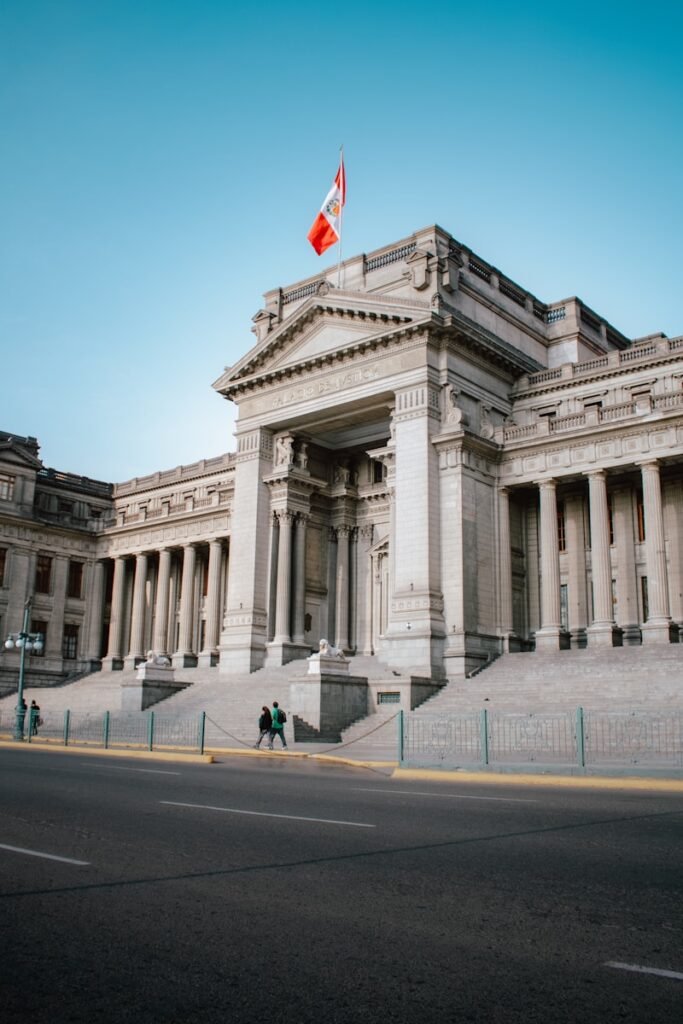
Benefits of the Peru Digital Nomad Visa
The Peru Digital Nomad Visa provides remote workers and entrepreneurs with a range of benefits that make it an attractive option for those looking to live and work in one of South America’s most culturally rich and affordable destinations. Below, we explore the major benefits of the Peru Digital Nomad Visa, from extended stay options to tax benefits and the country’s support for remote work and entrepreneurship.
1. Long Stay Options Compared to Typical Tourist Visas
One of the most significant benefits of the Peru Digital Nomad Visa is the extended stay it offers, which is a considerable advantage over typical tourist visas.
- Tourist Visa Limitations: Most tourists can only stay in Peru for up to 183 days within a 365-day period under a standard tourist visa. While this can be sufficient for short visits, it often does not meet the needs of digital nomads who plan to stay for a longer duration and who may want to avoid the hassle of visa runs or constant renewals.
- Digital Nomad Visa Duration: In contrast, the Peru Digital Nomad Visa allows remote workers to stay in the country for up to one year, with the potential for renewal. This is especially beneficial for digital nomads who want to establish a longer-term base in Peru, whether for the convenience, cost of living, or access to beautiful landscapes and vibrant cities.
- After the initial one-year period, visa holders can apply for a renewal to extend their stay, offering flexibility for those who plan to continue working remotely in Peru. Unlike tourist visas, which often require exiting the country for visa renewals, the digital nomad visa allows remote workers to stay continuously without worrying about reapplying for temporary visas or leaving and re-entering the country.
- Stable Residency: Having this longer-term visa gives digital nomads the peace of mind that they can stay in Peru for a year (or longer with renewal) without the uncertainty or inconvenience of constantly needing to reapply for a visa, as is often the case with tourist visas.
2. Tax Benefits or Exemptions for Digital Nomads
The Peru Digital Nomad Visa is designed to encourage remote workers to make Peru their base while still working for foreign companies or businesses. This brings with it a number of potential tax benefits or exemptions, making it financially attractive for those who wish to maintain an income stream while minimizing tax liabilities.
- Income Tax Exemption: Digital nomads who hold the visa and are working for foreign employers may be eligible for tax exemptions on their foreign income. This is a major benefit for remote workers who earn income from outside of Peru but wish to reside in the country. While local taxes may apply to income earned within Peru, this visa structure typically ensures that digital nomads are not taxed on income generated abroad, reducing the overall tax burden.
- Peru does not impose tax on foreign income, which makes it a tax-friendly destination for nomads working remotely for companies based outside of Peru. This allows remote workers to keep more of their earnings without worrying about being double-taxed or paying higher local taxes.
- Lower Tax Rates for Entrepreneurs: If you are an entrepreneur running your own business remotely, the tax rates in Peru can be more favorable compared to other countries. Peru has a relatively low corporate tax rate compared to many Western countries, which can be advantageous for remote entrepreneurs who want to set up a business in Peru.
- Tax Treaties with Other Countries: Peru has tax treaties with several countries, which may provide additional tax benefits for remote workers from those nations, helping avoid double taxation on foreign income. This is something digital nomads from countries like the U.S., Canada, or European Union nations should explore further to see if they can take advantage of favorable tax treaties when working remotely from Peru.
3. How This Visa Promotes Remote Work and Entrepreneurship
The Peru Digital Nomad Visa is not only beneficial for individual remote workers but also serves as a strong catalyst for entrepreneurship and the growth of the digital economy within the country. This visa provides remote workers and entrepreneurs with the right environment to establish a sustainable business presence in Peru while benefiting from the country’s growing digital infrastructure.
- Fostering Remote Work: The introduction of the Digital Nomad Visa reflects Peru’s commitment to embracing remote work as a vital part of its economic future. By offering a specific visa for remote workers, the country is signaling that it is open to global talent and is actively seeking to attract people who can bring knowledge, creativity, and investment to Peru without necessarily having to take a traditional job within the country. This helps to diversify the economy by encouraging a more global and flexible workforce.
- Encouraging Entrepreneurs: The visa also encourages entrepreneurs to move to Peru, start businesses, or grow their existing companies in the country. For entrepreneurs, this visa provides several unique advantages:
- Access to Local Networks: By living in Peru, entrepreneurs can immerse themselves in the local business community and gain access to business networks, co-working spaces, and startup hubs. Major cities like Lima have growing startup ecosystems and support for entrepreneurs, with incubators and accelerators helping people scale their businesses.
- Low Cost of Doing Business: The relatively low cost of living in Peru can make it more affordable to launch and operate a business compared to other global markets. This allows entrepreneurs to invest more resources into growing their companies or reducing operating costs while living in a beautiful, culturally rich destination.
- Access to a New Market: For entrepreneurs with a global mindset, Peru can offer access to emerging markets within South America. Being based in Peru can open up opportunities to engage with local and regional markets, providing a foundation for business expansion and cross-border opportunities in Latin America.
- Support for the Digital Economy: Peru’s government recognizes the growing role of the digital economy and is taking steps to position the country as an attractive destination for remote work, freelance opportunities, and entrepreneurship. The Peru Digital Nomad Visa, along with favorable tax policies and government incentives for remote workers and business owners, helps the country build a more sustainable and diverse digital economy.

Challenges and Considerations for Digital Nomads in Peru
While the Peru Digital Nomad Visa offers numerous benefits, there are also challenges and considerations that digital nomads should be aware of before relocating to this vibrant country. From language barriers and safety concerns to health insurance and medical care, it’s important to consider these factors to ensure a smooth and enjoyable stay. Below, we explore the key challenges digital nomads may face in Peru and provide practical tips on how to navigate them.
1. Language Barrier and Tips for Learning Spanish
One of the most significant challenges digital nomads may face when relocating to Peru is the language barrier. While English is spoken in some tourist areas, especially in Lima, and by younger generations or those working in the tourism and hospitality industries, the majority of Peruvians speak Spanish (with some regions also speaking Quechua or Aymara). For remote workers who wish to integrate more fully into Peruvian life or engage with locals outside of tourist areas, understanding and speaking Spanish becomes essential.
Why it’s a challenge:
- Limited English Fluency: In many parts of Peru, especially outside of larger cities like Lima or Cusco, English is not widely spoken. This can make everyday tasks like ordering food, asking for directions, or negotiating prices more difficult for non-Spanish speakers.
- Cultural Integration: To build strong relationships with locals or fully embrace Peruvian culture, knowing Spanish is important. It opens up opportunities to participate in social events, understand cultural nuances, and form lasting friendships.
Tips for overcoming the language barrier:
- Take Spanish Classes: Digital nomads can take language classes at local schools, universities, or online platforms. Many language schools in cities like Lima and Cusco offer courses specifically for foreigners looking to improve their Spanish.
- Language Exchange Programs: Many cities in Peru have language exchange meetups, where locals and foreigners come together to practice languages. Engaging in these programs can accelerate your learning while giving you the chance to connect with others.
- Use Language Apps: Apps like Duolingo, Babbel, or Memrise can be helpful for practicing vocabulary and sentence structure. Regular practice, even on the go, can help boost your Spanish proficiency.
- Immerse Yourself: The best way to learn any language is through immersion. Surround yourself with Spanish speakers, watch local TV shows and movies in Spanish, and try to use the language in daily interactions.
2. Safety Concerns and How to Stay Secure
Safety is an important consideration for any digital nomad, especially in a new country. While Peru is generally safe for tourists and expats, there are areas that may have higher crime rates, and it’s crucial to stay informed about local safety concerns.
Why it’s a challenge:
- Petty Theft: In tourist-heavy cities like Lima, Cusco, and Arequipa, pickpocketing and street crime can be an issue, especially in crowded areas or on public transportation. Digital nomads may be at risk if they aren’t vigilant about their belongings.
- Scams: Some tourists and foreigners may encounter scams, such as overcharging for services or goods, or taxi scams. These are more common in tourist hotspots, so it’s essential to be cautious when dealing with vendors, taxi drivers, or street vendors.
- Social Inequality: While Peru is a beautiful country, it has noticeable social and economic inequality, and certain neighborhoods may be more prone to crime. Digital nomads should research the best areas to live and work, especially if they’re unfamiliar with the region.
Tips for staying safe:
- Stay in Safe Neighborhoods: When choosing where to live or stay, prioritize areas known for safety, such as Miraflores, Barranco, or San Isidro in Lima. In Cusco, neighborhoods like San Blas are known for their expat communities and safety.
- Avoid Flashing Valuables: Be mindful of your possessions, especially in busy areas. Avoid showing expensive gadgets, such as laptops or cameras, in public places, and always keep bags and valuables close to your body. Using a crossbody bag with a zipper is a good option.
- Use Registered Taxis or Rideshare Apps: To avoid taxi scams, use official taxi services or ride-sharing apps like Uber or Beat, which are widely available in major cities and offer safer, more reliable transportation.
- Stay Informed: Keep up-to-date with local news and safety information, particularly regarding areas that might be more dangerous for travelers. Use resources like local expat groups or websites such as Safe Travel to stay informed.
3. Health Insurance and Medical Care for Remote Workers in Peru
Access to quality health care is a crucial consideration for digital nomads, especially those who are staying in a foreign country for an extended period. While Peru offers a relatively low cost of living, including health care, the quality of medical services can vary significantly depending on where you are located.
Why it’s a challenge:
- Varied Quality of Healthcare: While major cities like Lima and Arequipa have well-equipped hospitals and clinics, rural areas may have more limited medical facilities. In more remote regions, medical care might not meet international standards.
- Health Insurance Options: Digital nomads from different countries may face challenges understanding the health insurance options available in Peru. Many insurance policies do not cover international care, so it’s important to understand whether your existing health insurance provides coverage in Peru.
Tips for managing health care:
- Get International Health Insurance: Digital nomads should consider purchasing international health insurance that covers them while living in Peru. Many companies specialize in offering coverage for expats, remote workers, and long-term travelers, ensuring you have access to medical services when needed.
- Private Healthcare in Peru: For those seeking high-quality care, private health care facilities in Peru can offer better services compared to public hospitals. If you’re living in cities like Lima or Cusco, you’ll find modern private clinics and hospitals with English-speaking doctors.
- Emergency Care: In the event of an emergency, it’s important to know the nearest hospital or clinic. Major cities have 24/7 emergency services, but rural areas may not be as well-equipped. It’s advisable to have a list of local medical facilities and emergency contact numbers readily available.
- Routine Care: For everyday medical needs, you can visit local pharmacies for minor treatments, over-the-counter medications, or health advice. Pharmacies in Peru are widespread and often provide affordable options for basic health needs.
- Vaccinations and Health Precautions: Before arriving in Peru, make sure to check which vaccinations are recommended or required for travel. Common vaccinations may include Hepatitis A and B, Typhoid, and Yellow Fever depending on your travel plans and areas you will visit.
Conclusion
The Peru digital nomad visa is a fantastic opportunity for remote workers looking to enjoy a more laid-back lifestyle in one of South America’s most beautiful countries. Whether you’re looking to explore ancient ruins, live among vibrant cities, or just soak up the cultural vibe, Peru is calling! I hope this guide has given you the details you need to decide whether this visa is right for you. Ready to take the plunge and start your digital nomad life in Peru? Let us know in the comments


